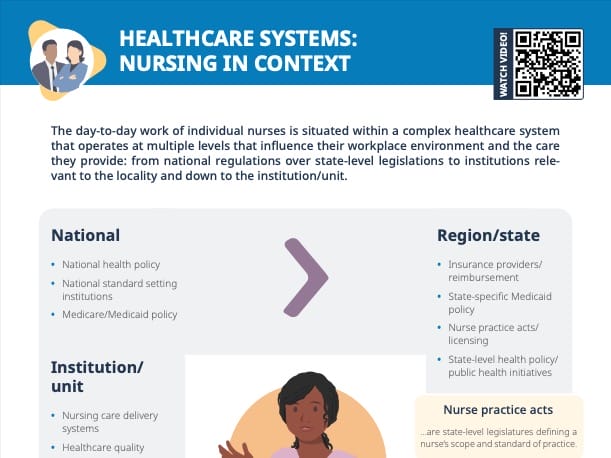What is a telemetry unit?
Definition
Telemetry units are within a hospital providing continuous cardiac and vital sign monitoring of clients.
Telemetry units are sometimes referred to as “step-down” units or “monitored beds.” Clients wear a device that remotely transmits vital signs to a centralized location that is continuously monitored. Telemetry units have multidisciplinary teams which may include multiple physician specialities, nurses, telemetry technicians, and other support staff.
Level of care
Clients on these units are generally considered medically stable, but require close monitoring for complications.
Comparing levels of care, a telemetry unit would be in between a general med–surg unit and the ICU:
- Med–surg unit: periodic, non-invasive vital sign monitoring with clients potentially ambulatory
- Telemetry unit: continuous, non-invasive vital sign monitoring with clients potentially ambulatory while being monitored remotely
- ICU: continuous, often invasive vital sign monitoring with clients non-ambulatory and critically ill
Types of telemetry units
- Cardiac telemetry unit: focus on cardiac conditions
- Medical telemetry units: broader range of patients, also monitoring respiratory issues, sepsis, electrolyte imbalances
- Surgical telemetry units: for post-operative clients
- Progressive care units: for clients not quite critical enough for the ICU
- Neuro telemetry units: monitoring neurological conditions, with continuous EEG
What does a telemetry unit nurse do?
Telemetry nurses continuously monitor clients heart rhythms and vital signs using telemetry equipment. Key nursing skills on a telemetry unit include:
- Accurate placement of ECG equipment
- Interpretation of cardiac rhythms and arrhythmias
- Monitoring client’s before, during, and after invasive procedures
- Rapid response to emergencies: recognizing symptoms of cardiopulmonary and respiratory emergencies and implementing initial resuscitation steps
- BLS/ACLS certification
Typical client types in telemetry units
- Heart failure
- Myocardial infarction
- Arrhythmias
- Post-cardiac procedures
- Stroke patients
- Unstable blood pressure

